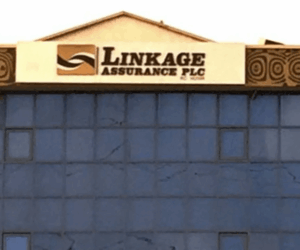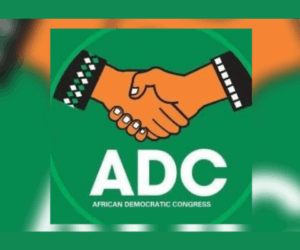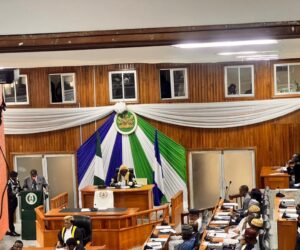In the global search for sustainable health financing models, countries like Nigeria must look beyond legacy systems and toward proven innovations emerging from resource-constrained regions. At the 2025 BusinessDay Health Conference, a compelling case was made for learning from the Caribbean’s Stratified Pooled Risk Coverage (SPRC) model, a bold, scalable approach to health financing. But even more striking is how this model has similarities to the enabling policy frameworks for Colombia’s now-world-class healthcare system, offering Nigeria a blueprint for transformation.
“Nigeria faces similar challenges, with antiquated pricing schemes, inadequate capitation payments, and reimbursement delays eroding provider trust and driving healthcare workers to private practice or out of the country altogether.”
Colombia: Proof that tiered models work at scale
Two decades ago, Colombia faced the same health system fragilities that afflict many developing nations: low coverage, poor access, and inefficient financing. Today, Colombia boasts over 90 percent health insurance penetration, universal benefit packages, and one of the most sophisticated health systems in the world. It is now a rising health tourism destination, attracting patients from across Latin America, the Caribbean, and beyond. Much of this success is due to its version of a tiered, pooled risk model.
In contrast, most Caribbean countries still lag, with only 10–15 percent insurance penetration and 35–40 percent out-of-pocket payments, a figure that worsens when patients are forced to pay upfront and await slow insurance reimbursements. Nigeria’s situation is even starker: less than 10 percent of the population is covered by health insurance, and out-of-pocket payments exceed 70 percent of total health expenditure.
The eastern Caribbean surgery problem—and its Nigerian echo
One of the biggest cracks in pre-reform Caribbean health financing is pricing. A complex surgery in Saint Lucia—whether it’s an eight-hour neurosurgery or a one-hour caesarean section, is reimbursed at one thousand Eastern Caribbean Dollars (N565,000), a rate set in 1992. After doctors and consumables are paid, only EC$100 remains for hospital operations. The result? Underfunded public hospitals, brain drain, and long wait times for patients. To address this, a major part of the health finance reform is data systems installation, data collection, and analysis to identify actual procedure costs.
Nigeria faces similar challenges, with antiquated pricing schemes, inadequate capitation payments, and reimbursement delays eroding provider trust and driving healthcare workers to private practice or out of the country altogether. Without costing healthcare in real terms, no insurance scheme can survive.
SPRC lessons for Nigeria: A clear roadmap
The Stratified Pooled Risk Coverage (SPRC) model is built around three financing tiers:
· Tier 1: Government-funded coverage for all, up to a basic minimum.
· Tier 2: Private or reinsurance-backed coverage for those who can afford it, including employer-based or voluntary policies.
· Tier 3: Catastrophic and overseas care, partially financed through specialised insurance with significant discounts because of aggregated patient volumes.
Applied correctly, this structure creates risk pooling, improves resource allocation, and reduces inequities. In the Caribbean, it has begun to replace disjointed, siloed systems with digitally enabled, consolidated health finance authorities. The Colombian model validates this approach at scale, showing how SPRC principles can underpin near-universal coverage.
Nigeria must go further by integrating this structure into its National Health Insurance Authority (NHIA) architecture.
Piloting SPRC in Nigeria: From Kwara to national scale
Before building a skyscraper, you test the foundation—and Nigeria has already done just that with localised health financing pilots that mirror SPRC principles.
A notable example is the PharmAccess-supported Community-Based Health Insurance Scheme (CBHIS) in Kwara State. Launched in 2007 and later expanded, the programme offered subsidised premiums, risk pooling, and defined benefit packages for thousands of informal sector households. By integrating private providers and leveraging donor and state government contributions, it demonstrated that tiered financing and standardised benefits could drive enrollment and improve health outcomes, even in rural, low-income populations. PharmAccess is now working to expand the use of health data infrastructure in Nigeria and other African countries.
Similarly, Lagos State’s “Ilera Eko” scheme, under the Lagos State Health Management Agency (LASHMA), offers tiered coverage with technology-driven enrollment, claims management, and partnerships with private HMOs. It reflects early SPRC features, including stratified benefit packages and pooled risk across formal and informal populations.
These pilots, along with ongoing efforts in Rivers State, show that Nigeria doesn’t need to import a ready-made SPRC model; it can customise and scale what already works.
Read also: FG plans path to self-reliance in health financing amid aid cuts
To do so, the NHIA and state health agencies should work together to:
· Expand local pilot programmes into larger, multi-tiered schemes.
· Contract both public and faith-based providers within a shared benefit framework.
· Use these pilots as regulatory sandboxes to refine digital tools, provider payments, and governance models before national rollout.
· Test innovative revenue mechanisms, such as state-level “sin” taxes or local health savings schemes, to fund the risk pool.
What Nigeria needs now is federal leadership that empowers state-level experimentation, backed by digital systems and national coordination.
If scaled, these localised SPRC pilots can become the bedrock of a nationwide health financing transformation, turning theory into results and positioning Nigeria as a universal health coverage pioneer in the Global South.
Nigeria’s unique advantage: Faith-based systems
Unlike the Caribbean, Nigeria has a massive faith-based healthcare network, Christian and Muslim alike, that plays a critical frontline role. Examples include:
· Christian Health Association of Nigeria (CHAN) – over 2,000 facilities, serving millions across rural and peri-urban Nigeria.
· Islamic Medical Association of Nigeria (IMAN) – operating clinics, medical missions, and health centres in underserved communities.
These networks already provide accessible, trusted care, particularly where government presence is weak. By contracting these providers into the NHIA’s digital reimbursement system, Nigeria can scale coverage at relatively low marginal cost, especially if unit-based cost reimbursements are linked to actual services.
Digital infrastructure and health tech: Nigeria’s secret weapon
The Caribbean is moving toward digital health claims, EDI payment systems, and electronic health records. Nigeria can leapfrog this phase with its homegrown fintech ecosystem. Payment platforms like Flutterwave, Moniepoint, and Paystack, alongside startups like Helium Health and Doctoora, are already building the rails for digital health and payment and remittance infrastructure. What’s needed now is national-scale integration under NHIA to ensure claims are processed efficiently, data is interoperable, and costs are visible.
The path forward
To translate these lessons into action, Nigeria should:
1. Consolidate all public and donor health financing under NHIA tiers.
2. Update unit cost reimbursements and abolish outdated pricing.
3. Contract public, private, faith-based and NGO providers into a national network.
4. Scale up digital health financing infrastructure using local tech players.
5. Launch SPRC-inspired pilot programmes in select states (e.g., Lagos, Kwara, Plateau).
6. Diversify funding sources—VAT surcharges, “sin” taxes, remittances, HSAs.
Conclusion: Toward a Nigerian SPRC
Colombia has done it. The Caribbean is evolving. Nigeria has all the raw materials—scale, innovation, legal framework, provider networks, and a vibrant tech sector. What remains is execution.
By adapting the SPRC model, integrating faith-based care, and using healthcare financing not just as a budgetary exercise but as an economic strategy, Nigeria can build a health system that works for all its people—and export health, not hardship, to the rest of the world.
Dr Wiebe Boer, Chief Growth Officer, JIPA Network, Advisory Board Member, PharmAccess Nigeria, & Editorial Advisory Board Member for BusinessDay









